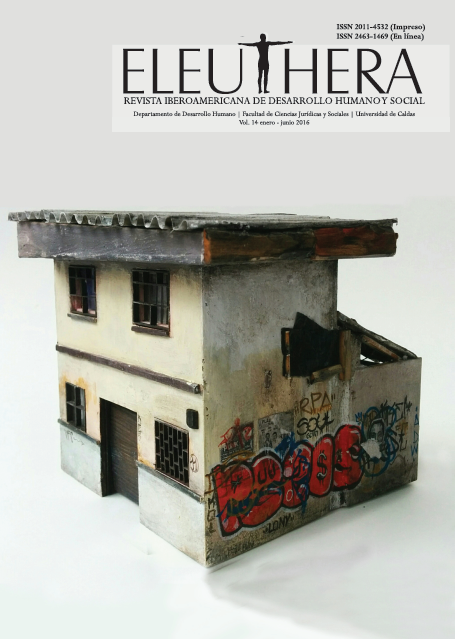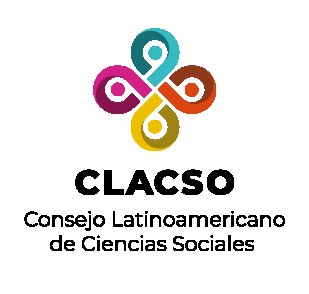Authors
Abstract
Objective. The purpose of this review article is to identify and characterize the memory functioning in children with Autism Spectrum Disorder without intellectual deficit. Methodology. A review in different databases was carried out. Articles resulting from research between 2009 and 2015, whose sample were children and adolescents, were considered as inclusion criteria. Results. It was found that people with autism show impairments in working memory, episodic memory and procedural memory. Conclusions. Recognizing the functioning of the different memory systems in autism spectrum disorder will make possible for the teacher to generate strategies to facilitate teachinglearning processes in the classroom, which will revert to a comprehensive human development.
References
American Psychiatric Association. (2002). Manual diagnóstico y estadístico de los trastornos mentales IV TR. Barcelona, España: APA.
Alloway, T.P. & Alloway, R.G. (2010). Investigating the predictive roles of working memory and IQ in academic attainment. Journal of Experimental Child Psychology, 80, 606–621
Altgassen, M., Williams, T., Bölte, S. & Kliegel, M. (2009) Time-Based Prospective Memory in Children with Autism Spectrum Disorder. Brain impairment, 10(1), 52–58
Altgassen, M., Schmitz-Hu¨bsch, M. & Kliegel, M. (2010). Event-based prospective memory performance in autism spectrum disorder. Journal of Neurodevelopmental Disorders, 2, 2–8. http://dx.doi.org/10.1007/s11689-009-9030-y.
Andersen, P. N., Hovik, K. T., Skogli, E. W., Egeland, J., & Oie, M. (2013). Symptoms of ADHD in Children with High-Functioning Autism Are Related to Impaired Verbal Working Memory and Verbal Delayed Recall. PLoS ONE 8(5): e64842. doi:10.1371/journal.pone.0064842
Andreano, J.M. & Cahill, L. (2009). Sex influences on the neurobiology of learning and memory. Learning and Memory, 16(4), 248–266.
Baddeley, A. (1999). Memoria humana, teoría y práctica. Aravaca, España: McGraw-Hill
Baddeley, A. & Hitch, G. (1974). Working memory. In G.H. Bower, (Ed.), The psychology of learning and motivation: Advances in research and theory (pp. 47–90). New York, United States: Academic Press.
Baddeley, A.D. (2000). The episodic buffer: A new component of working memory? Trends in Cognitive Sciences, 4, (11), 417-423.
Baltruschat, L. et al. (2012). The effects of multiple exemplar training on a working memory task involving sequential responding in children with autism. The Psychological Record, 62, 549–562
Bigham, S., Boucher, J., Mayes, A. & Anns, S. (2010) Assessing Recollection and Familiarity in Autistic Spectrum Disorders: Methods and Findings. J Autism DevDisord, 40, 878–889. doi: 10.1007/s10803-010-0937-7
Bordignon, S., Endres, R., Trentini, C. & Bosa, C. (2015). Memory in Children and Adolescents with Autism Spectrum Disorder: A Systematic Literature Review. Psychology, & Neuroscience, 8(2), 211–245.
Bowler, D.M., Matthews, N.J. & Gardiner, J.M. (1997). Asperger’s syndrome and memory: Similarity to autism but not amnesia. Neuropsychologia, 35, 65–70.
Boucher, J., Mayes, A. & Bigham, S. (2006). Memory in autistic spectrum disorder. Psychol Bull, 138(3), 458-96. doi: 10.1037/a0026869.
Boucher, J. (1981). Immediate free recall in early childhood autism: Another point of behavioural similarity with the amnesic syndrome. British Journal of Psychology, 72, 211-215.
Boucher, J. & Warrington, E.K. (1976). Memory deficits in early infantile autism: some similarities to the amnesic syndrome. British Journal of Psychology, 67(1), 73-87.
Bowler, D.M., Gardiner, J.M. & Grice, S.J. (2000). Episodic memory and remembering in adults with Asperger´s syndrome. Journal of Autism and Developmental Disorders, 30(4), 295-304.
Blair, R.J.R., Frith, U., Smith, N., Abell, F. & Cipolotti, L. (2002). Fractionation of visual memory: agency detection and its impairment in autism. Neuropsychologia, 40, 108-118.
Brandimonte, M.A., Einstein, G.O. & McDaniel, M.A. (1996). Prospective memory: Theory and applications. Mahwah, NJ: Lawrence Erlbaum.
Brandimonte, M.A., Filippello, P., Coluccia, E., Altgassen, M. & Kliegel, M. (2011). To do or not to do? Prospective memory versus response inhibition in autism spectrum disorder and attention-deficit/hyperactivity disorder. Memory, 19, 56–66 http://dx.doi.org/10.1080/09658211.2010.535657
Brenner, L., Shih, H., Colich, N., Sugar, C., Bearden, C. & Dapretto, M. (2014). Time Reproduction Performance Is Associated with Age and Working Memory in High-Functioning Youth with Autism Spectrum Disorder. Autism Research, 8, 29-37. doi: 10.1002/aur.1401.
Brezis, R., Galili, T., Wong, T. & Piggot, J. (2014). Impaired Social Processing in Autism and its Reflections in Memory: A Deeper View of Encoding and Retrieval Processes. Journal Autism Development Disorder, 44, 1183–1192. doi: 10.1007/s10803-013-1980-y
Cycowicz, Y., Friedman, D., Snodgrass, J. & Duff, M. (2001). Recognition and source memory for pictures in children and adults. Neuropsychology, 39, 255-267.
Cornett, K., Miora, D., Fass, T. & Dixon, D. (2013). Memory Functioning for Personally Experienced and Witnessed Events in Children with Autism and the Implications for Educators, Mental Health Professionals, and the Law. Journal of Applied Research on Children: Informing Policy for Children at Risk, 4(2), 1-12
Cui, J., Gao, D., Chen, Y., Zou, X. & Wang, Y. (2010). Working Memory in Early-School Age Children with Asperger’s Syndrome. Journal Autism DevelopmentDisord, 40, 958–967 doi: 10.1007/s10803-010-0943-9
D’Amato, R.C., Crepeau-Hobson, F., Huang, L.V. & Geil, M. (2005). Ecological neuropsychology: an alternative to the deficit model for conceptualizing and serving students with learning disabilities. Neuropsychological Review, 15(2), 97-103.
De la Peña Álvarez, M.C. (2005). Neuropsicopedagogía. La psicopedagogía del futuro. Tribuna Libre, (2). Recuperado de http://comunidad- escolar.pntic.mec.es/762/tribuna2.html
Erdodi, L., Lajiness-O’Neill, R. & Shmitt, T. (2013). Learning Curve Analyses in Neurodevelopmental Disorders: Are Children with Autism Spectrum Disorder Truly Visual Learners?J Autism DevDisord, 43, 880–890. doi: 10.1007/s10803-012-1630-9
Frith, U. (1989). Autism: Explaining the enigma. Oxford, UK: Basil Blackwell.
Gil, S., Chambres, P., Hyvert, C., Fanget, M. & Droit-Volet, S. (2012). Children with Autism Spectrum Disorders Have “The Working Raw Material” for Time Perception. PLoS ONE, 7(11), e49116. doi: 10.1371/journal.pone.0049116
Goddard, L., Dritschel, B. & Howlin, P. (2014). A Preliminary Study of Gender Differences in Autobiographical Memory in Children with an Autism Spectrum Disorder.J Autism DevDisord, 44, 2087–2095. doi: 10.1007/s10803-014-2109-7
Goswami, U. (May, 2006). Neuroscience and education: from research to practice? Nature Reviews Neuroscience, 7, 406-413. doi: 10.1038/nrn1907
Johnson, M.K., Hashtoudi, S. & Lindsay, D.S. (1993). Source monitoring. Psychological Bulletin, 114, 3–28. doi: 10.1037/ 0033-2909.114.1.3.
Jiang, Y., Capistrano, C. & Palm, B. (2014). Spatial Working Memory in Children with High-Functioning Autism: Intact Configural Processing But Impaired Capacity. Journal of Abnormal Psychology, 123 (1), 248–257.doi: 10.1037/a0035420
Jones, C., Happe, F., Pickles A., Marsden, A., Tregay, J., Baird G., Simonoff, E. & Charman, T. (2011). Everyday Memory’ Impairments in Autism Spectrum Disorders. Journal Autism DevelopmentDisord, 41, 455–464 doi:10.1007/s10803-010-1067-y.
Lai, M.C., Lombardo, M.V., Pasco, G., Ruigrok, A.N., Wheelwright, S.J., Sadek, S.A. et al. (2011). A behavioral comparison of male and female adults with high functioning autism spectrum conditions. PLoS ONE, 6(6), e20835.
Lelii, S. & Wellman, H. (2012). Delayed Self Recognition in Autism: A Unique Difficulty? Res Autism SpectrDisord, 6(1), 212–223. doi: 10.1016/j.rasd.2011.05.002
Lind, S., & Bowler, D. (2009). Recognition Memory, Self-Other Source Memory,and Theory of Mind in Children with Autism Spectrum Disorder. J Autism DevDisord, 39, 1231–1239. doi 10.1007/s10803-009-0735-2
Maister, L. & Plaisted-Grant, K. (2011). Time perception and its relationship to memory in Autism Spectrum Conditions. Developmental Science, 1311– 1322. doi: 10.1111/j.1467-7687.2011.01077.x
Mammarellaa, I., Giofre, D., Caviola, S., Cornoldi, C. & Hamilton, C. (2014). Visuospatial working memory in children with autism: The effect of a semantic global organization. Research in DevelopmentalDisabilities, 35, 1349-1356. doi: 10.1016/j.ridd.2014.03.030
Margulis, L. (2009). Funcionamiento de los sistemas de memoria en niños con Trastorno Autista y Trastorno de Asperger. Revista Argentina de Neuropsicología, 13, 29-48.
Mattison, M., Dando, C. & Ormerod, T. (2014). Sketching to Remember: Episodic Free Recall Task Support for Child Witnesses and Victims with Autism Spectrum Disorder. J Autism DevDisord, 45(6),1751-65. doi: 10.1007/s10803-014-2335-z
McGonigle-Chalmers. & McSweeney, M. (2013). The Role of Timing in Testing Nonverbal IQ in Children with ASD. Journal of Autism, & Developmental Disorders, 43(1), 80-90.doi:10.1007/s10803-012-1545-5
Pérez, P. y Martínez, L. (2014). Perfiles cognitivos en el Trastorno Autista de Alto Funcionamiento y el Síndrome de Asperger. CES Psicología, 7(1), 141-155.
Phelan, H., Filliter, J. & Johnson, S. (2011). Brief Report: Memory Performance on the California Verbal Learning Test - Children’s Version in Autism Spectrum Disorder. J Autism DevDisord, 41, 518–523. doi:10.1007/s10803-010-1069- 9
Rajendran, G., Law, A., Logie, R., Meulen, M., Fraser, D. & Corley, M. (2011). Investigating Multitasking in High-Functioning Adolescents with Autism Spectrum Disorders Using the Virtual Errands Task. J Autism DevDisord, 41, 1445–1454. doi: 10.1007/s10803-010-1151-3
Rosselli, M., Matute, E. y Ardila, A. (2010). Neuropsicología del desarrollo infantil. México D.F. México: Manual Moderno.
Salcedo, M., Moreno, J., Ruiz, M. & Ferrin, M. (2013). Evaluation of Planning Dysfunction in Attention Deficit Hyperactivity Disorder and Autistic Spectrum Disorders Using the Zoo Map Task. Child Psychiatry Hum Dev, 44, 166–185. doi: 10.1007/s10578-012-0317-y
Schuh & Eigsti. (2012). Working Memory, Language Skills, and Autism Symptomatology. Behavioral Sciences, 2, 207-218.doi:10.3390/bs2040207
So, W., Lui, M., Wong, T. & Sit, L. (2015). The Use of Hand Gestures to Communicate About Nonpresent Objects in Mind among Children with Autism Spectrum Disorder. Journal of Speech, Language, and Hearing Research, 58, 373–382.doi: 10.1044/2015_JSLHR-L-14-0213
Solovieva, Y. (2014). Intervención neuropsicológica infantil: diversidad de posibilidades. Revista Chilena de Neuropsicología, 9(2), 46-48.
Soulieres, I., Zeffiro, T.A., Girard, M.L. & Mottron, L. (2011). Enhanced mental image mapping in autism. Neuropsychologia, 49, 848–857.
Southwick, J.S., Bigler, E.D., Froehlich, A., DuBray, M.B., Alexander, A.L., Lange, N. & Lainhart, J.E. (2011). Memory Functioning in Children and Adolescents with Autism. Neuropsychology, 25(6), 702–710
Terrett, G., Rendell, P., Saunders, S., Henry, J., Bailey, P. & Altgassen, M. (2013). Episodic Future Thinking in Children with Autism Spectrum Disorder. J Autism DevDisord, 43, 2558–2568. doi: 10.1007/s10803-013-1806-y
Trontel, H., Duffield, T., Bigler, E., Froehlich, A., Prigge, M., Nielsen, J.,… Lainhart, J. (2013). Fusiform Correlates of Facial Memory in Autism. Behav. Sci., 3, 348–371.doi:10.3390/bs3030348
Tsatsanis, K., Noens, L., Illmann, C., Pauls, D., Volkmar, F., Schultz, R. & Klin, A. (2011). Managing Complexity: Impact of Organization and Processing Style n Nonverbal Memory in Autism Spectrum Disorders. J Autism DevDisord, 41, 135–147. doi: 10.1007/s10803-010-1139-z
Tulving, E. & Donaldson, W. (1972). Organization of memory. New York: Academic Press.
Williams, D., Goldstein, G., Carpenter, P. & Minshew, N. (2005). Verbal and Spatial Working Memory in Autism. Journal of Autism and Developmental Disorders, 35(6), 747- 756.doi: 10.1007/s10803-005-0021-x
Williams, D., Boucher, J., Lind, S. & Jarrold, C. (2013). Time-based and event- based prospective memory in autism spectrum disorder: The roles of executive function and theory of mind, and time-estimation. Journal of Autism and Developmental Disorders, 43, 1–13 http://dx.doi.org/10.1007/s10803-012-1703-9
Wheeler, M., Stuss, D. & Tulving, E. (1997). Towards a theory of episodic memory: The frontal lobes and autonoetic consciousness. Psychological Bulletin, 121, 331–354. doi:10.1037/00332909.121.3.331.
Wilkinson, D., Best, C., Minshew, N. & Strauss, M. (2010). Memory Awareness for Faces in Individuals with Autism. J Autism DevDisord, 40, 1371–1377 doi: 10.1007/s10803-010-0995-x
Wojcik, D., Moulin, C. & Souchay, C. (2013). Metamemory in Children with Autism: Exploring “Feeling-of-Knowing” in Episodic and Semantic Memory. Neuropsychology, 27(1), 19–27.
Yerys, B., Wallace, G., Jankowski, K., Bollich, A. & Kenworthy, L. (2011). Impaired Consonant Trigrams Test (CTT) performance relates to everyday working memory difficulties in children with Autism Spectrum Disorders. Child Neuropsychology, 17(4), 391–399.
Yi, L., Fan, Y., Joseph, L., Huang, D., Wang, X., Li, J. & Zou, X. (2014). Event-based prospective memory in children with autism spectrum disorder: The role of executive function. Research in Autism Spectrum Disorders, 8, 654–660. http://dx.doi.org/10.1016/j.rasd.2014.03.005
Zalla, T., Labruyere., N. & Georgieff, N. (2013). Perceiving Goals and Actions in Individuals with Autism Spectrum Disorders. J AutismDevDisord, 43, 2353–2365. doi: 10.1007/s10803-013-1784-0.

 PDF (Español)
PDF (Español)
 FLIP
FLIP




























